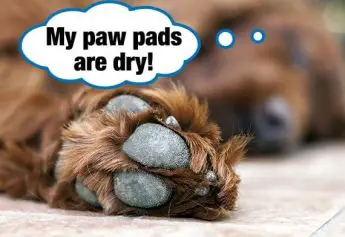Overview
Quick Navigation
Most dogs, unlike other creatures, easily feel comfortable with human beings; that is why they are very good pets. It is a lot quicker for dogs to adapt to the peculiar surroundings of your home and even make it their home. It is even so essential that you guarantee your pet’s safety and comfort within your home. In doing this, several factors have to be considered and in making such an important decision. One of such several factors is the type of flooring that exists in such a home. It is worth knowing that most dogs do not do so well on hard floorings such as wood and tiles. This is because of the smooth nature of the floors, which can pose a challenge to your dog’s movement.
See also fat burning exercises that connect you and your dog
It would be a good thing if you can avoid using these types of floor finishing for the maximum safety and convenience of your dog. These types of floors increase the risk of your dog sliding and falling, which can result in minor injuries and bruises. There are, however, ways to avoid this.
Tips to safeguard your dog from slipping on hard floors
Most hard floors such as tiles, wood, polished cement can be beautiful and relatively easy to maintain but would pose a threat to your pet’s health. It would be very difficult for your pets, especially young puppies, to move on these floors without stumbling, which in the long run is detrimental to their health. You can stop this from happening by using the following tricks:
Check beneath your dog’s feet
Underneath the feet of your dog is where its paws are situated, which are very essential in its everyday movement, and they have an inbuilt grip capable of functioning on several surfaces. When its paws begin to wear and crack, your dog finds it hard to grip slippery floors, which can be disastrous. A simple solution to paw grip issues is the application of paw balm.
Cut your dog’s nails
Long nails in dogs can obstruct grip and effective movement as they are tempted to place their weight on the nails rather than their toes. A well-manicured and trimmed nail will ensure that your dog’s slipping and sliding days are short-lived.
Check this out tricks to get your picky dog to eat his food
Get rid of hairy feet
Your dog’s feet can be hairy, not just on the top but also underneath it. When the hairs around your dog’s paws became too long and bushy, they can cover its paw pads resulting in an inability for it to firmly grip hard floors and surfaces. Take out time to trim these hairs and stop your dog from sliding.
Use dog socks
Wearing dog socks for your dog is a great way of preventing slipping and sliding on smooth and hard floors, as these socks usually possess anti-slip grip features for your dog’s benefit.
Get shoes for the dog
Usually, dog shoes are worn for strolling on hard and rough grounds, but they can also serve indoors for hard floors. A pair of dog boots will save your dog the pains of stumbling and slipping within your house.
See this also: tricks to stop your dog from digging up your frontyard or backyard
Use grips for dog’s toenails
Your dog’s toenails are what it uses to grip surfaces and floors. Toenails grips can serve as boots for your dog’s toenails to increase the efficiency of its grip and make sliding and slipping a thing of the past.
Use mats or carpets
Instead of leaving your dog to stumble all day long, you can cover some part of the hard floors, especially areas they visit often with mats or rugs.
Restrict dog’s movement
In this case, where the entire house is floored with tiles or any other hard floor, you can restrict your dog to a certain area where this flooring is absent for its safety and benefit. You can make this happen by blocking your dog off with a gate even though it may impede on its freedom.
Apply paw wax
Although paw max is normally used to protect a dog’s paws from cold, ice, or snow, it can lend an extra grip to your dog’s paws and keep it from slipping on a smooth and slippery surface.
Use foot spray
This substance offers maximum protection for your dog against slipping and sliding on hard floors making room for friendly and easy movement.
Employ adhesive paw grips
They are materials that are stuck directly over the paws of your pet, and they make its grip firmer and stronger.
Change your floor type
If you are so concerned about your dog’s inability to move freely on your wood or tile floor, you can choose to change the flooring in general. Carpets and rubber materials are just right for your dog’s paws.
Check this also ways to get healthier by keeping pets
Teach your dog
You can solve your dog’s movement problems by training it on how to work on smooth and hard floors. This would involve helping them eliminate their phobia of the floor and teach them to move freely without slipping.
Consult your veterinarian
Sometimes the reason your dog keeps slipping and sliding on your floor might not be as a result of the nature of the floor. The problem can be from your dog, which is why it is necessary to consult your vet doctor when such a situation occurs and persists. Some medical conditions like arthritis, physical injuries, spinal problems, joint damage, e.t.c, can also be responsible for it. So before you conclude that your floor is the problem, try checking your dog with the vet.
Conclusion
If the health status and the comfort of your pet are what you desire, then it is necessary to pay attention to the floor type and how well it suits your dog.

